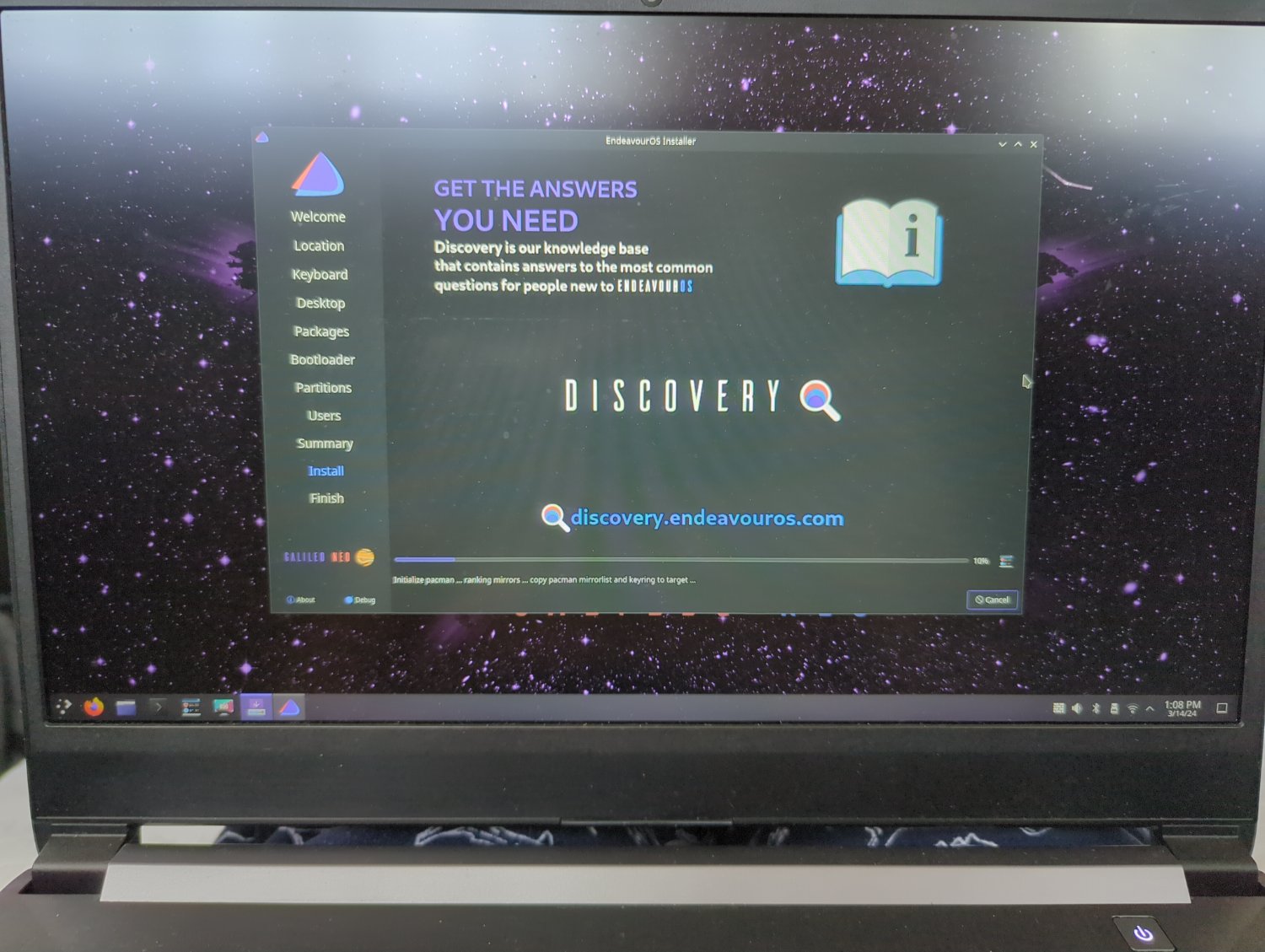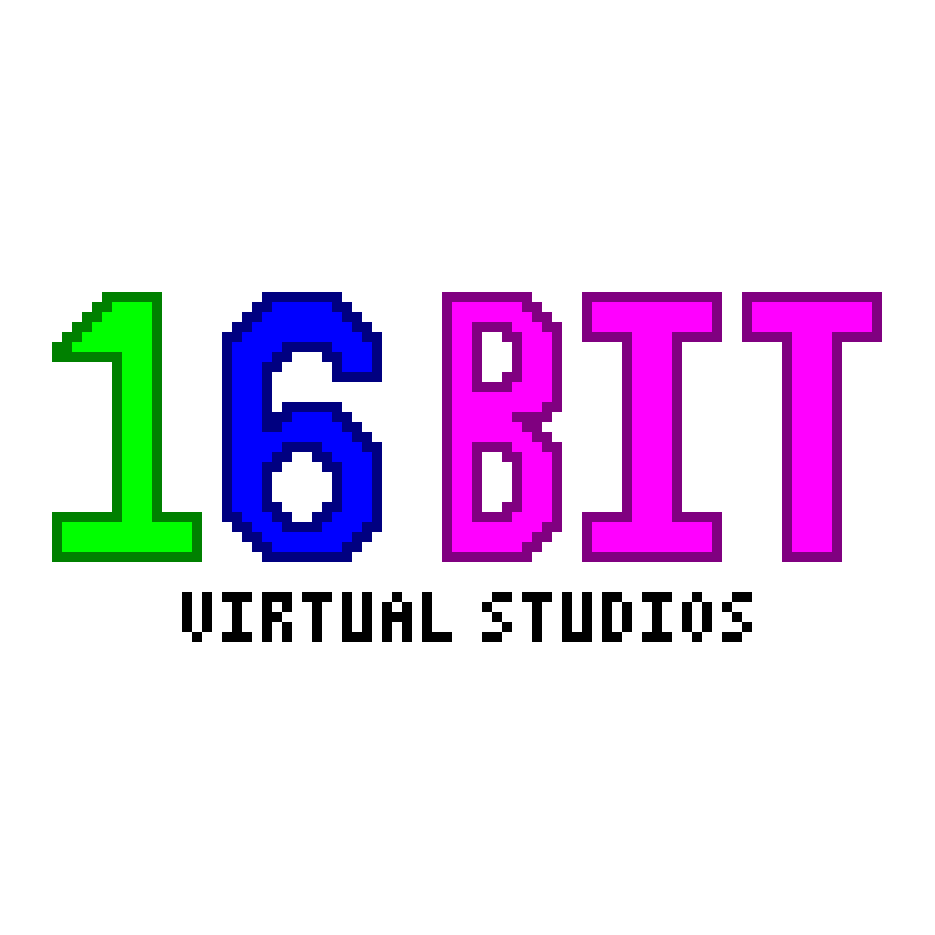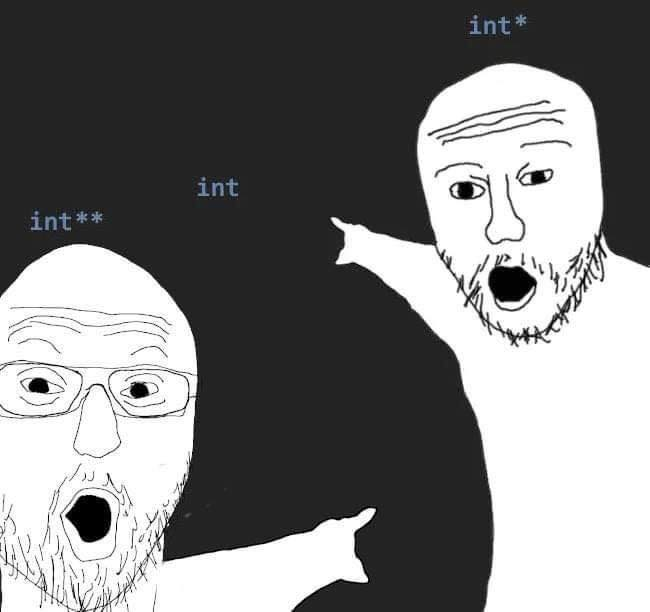Windows has been a thorn in my side for years. But ever since I started moved to Linux on my Laptop and swapping my professional software to a cross platform alternative, I’ve been dreaming on removing it from my SSD.
And as soon as I finish my last few projects, I can transition. (I want to do it now).
Trouble is which I danced my way across multiple amazing distros, I can’t decide which one to land on since the one software I want to test, Davinci Resolve doesn’t work on my Intel Powered Laptop. (curse you intel implementation of OpenCL).
So the opinions of those of you who’ve used Davinci Resolve, Unity/Godot, and/or FreeCAD. I want it to be stable with minimal down time on hardware with a AMD Ryzen 5 1600x and a RTX 3050. Here’s the OS’s I am looking at.
CentOS (alt Fedora)
- Pro: Recommended by Davinci Resolve for the OS, has good package manager GUI that separates Applications and System Software (DNF Dragon), Good support for multiple Desktop Environments I like. Game Support is excellent and about a few months behind arch.
- Con: When I last installed Fedora my OS Drives BTFS file system died a horrific and brutal death, losing all of my data. Can’t have that. And I personally do not like DNF and how slow it makes updating and browsing packages.
Debain (alt Linux Mint DE)
-
Pro: The most stable OS I’ve used, with a wide range of software support both officially in the distros package manager, or from developers own website. I am most familiar with this OS and APT
-
Cons: Ancient packages which may cause issues with Davinci Resolve and Video Games. An over reliance on the terminal to fix simple problems (though this can be said for most linux distros). I personally don’t like APT and how it manages the software.
EndevourOS (alt Manjaro)
-
Pro: The most up to date OS, great for games with the AUR giving support for a lot of software which isn’t available on other distros.
-
Cons: Manjaro has died on me once, and is a hassle to setup right and keep up. EndevourOS has no Package Manager GUI, and is over reliant on the Terminal. Can’t use pacman in a terminal the commands are confusing.
OpenSUSE Tumbleweed
-
Pro: Like Fedora but doesn’t use DNF, good game support
-
Cons: Software isn’t as well supported.
Edit: from the sounds of thing, and the advice from everyone. I think what I’ll do is an install order while testing distros (either in distro box or on a spare ssd) in the following order.
Debain/Mint DE -> OpenSUSE -> EndevourOS -> CentOS
This list is mostly due to stability and support for nvidia drivers.
you want debian and snaps/flatpacks/appimages/containers or whatever for the stuff that’s not in backports or needs to be updated too frequently (yt-dlp).
when i left slackware i tried all the distros, and had all the complaints you have about debian. why should i have to deal with an out of date package when slackware let me convert rpms to tgzs and install them willy-nilly? turns out i can do that with debian just fine.
walk that road though, you gotta travel far to get home.
I would go with Fedora or Mint, both for their software support and stability. Personally I like Mint over Fedora, I think it has a larger selection of software packages but I could be wrong.
Btrfs is more stable nowadays, I wouldn’t worry about that. And anyway you can choose XFS or Ext4 during installation while setting up your disk partitions.
If you are worried about a particular software package being too old, try installing FlatPaks instead, or use the Nix or Guix package managers which can co-exist easily with any other package manager.
Removed by mod
I’m just gonna say, go with something Debian based. MX Linux is very solid.
You sound like you’d be pretty capable, I personally use arch, less perceived limitations. Endeavour is the better choice between endeavour and manjaro.
MX if you just want a os with beautiful theming.
Either way good luck.
Mint or MX for a standard windows converter distro?
Web surfing and gaming.
MX might be slightly easier due to MX Tools. Otherwise it’s a matter of taste: xfce vs cinnamon, thunar vs nemo, etc.
Both should work great, just take care to install packages like steam or lutris through flatpak. And if you’re setting it up for someone else, install some pm frontend like discover or software centre, so that they can have unified updates through a gui.
It’s for me for starters.
Distro would be mint vs MX.
Cinnamon vs xfce is DE/Gui right? That’s the front end?
Eventually I plan to make HTPCs basically like a console replacement similar to/like steamOS
I’ve got some family that’s stuck on consoles and I want a gateway into PC gaming for them.
Cinnamon vs xfce is DE/Gui right? That’s the front end?
Yeah, and each distro has a DE they spend most of their time on. You can for example install mint with xfce, but it’s going to be far less polished.
For just surfing and gaming, it’s not really going to matter much. Try both of them out, and pick the one you think looks better. Ventoy will help you out with that.
Eventually I plan to make HTPCs basically like a console replacement similar to/like steamOS
You can just autostart steam in big picture mode.
Thanks.
For the HTPC I was thinking of something like plasma-bigscreen so it’s a media center.
Kodi, steam big screen, gog(?), etc
I’ll make one for myself to see if I can streamline it.
Depends on the person, I didn’t get on well with many distros, I like tinkering, arch afforded me that.
Some people are happy jumping in the deepend and having converter distros may alienate some new users.
Is there much different between MX and Debain Stable it’s built on?
Not sure to be honest, my experience with MX and Debian are limited, I like how MX looks, had no issues using in in the small amount of time I had used MX linux and I’m a sucker for good theming
Mint DE. Enable backports or whatever if you want to. Get a newer kernel. I’m on 6.1
This Lemmy BBQ has been the most entertaining yet… First off, now that the drunk uncles are finally showing up and the conversation has meandered away from OP’s original question, I would like to say thank you OP - I was stoked to find your retro-gaming youtube. So good man!
The next bit of entertainment are the aforementioned drunk uncles scrapping it out on the lawn mid-post. Who has the bitchin’est Camaro? Nevermind that for a moment. Did Uncle Vinnie and Uncle Scotty say their FIREBIRDS are the bitchin’est? Fuck those guys! Linus from the Linus Tuner Garage out on the coast at 138 Richmond and Main said he busted the shit out of the Firebird dashboard that one time. Nah man, that was a Civic, but whatever, Firebirds blow. Pontiac is a shitty company anyway. Um, aren’t they all GM. Yeah, but Firebirds have that shitty design on the hood and crap aftermarket support.
Why don’t we all just sit around the Grill. Pick your steak, have a beer…
And thank fuck we aren’t using Windows 11
Yeah I didn’t expect the neighbour 3 doors down with their lifted pickup to show up. But it’s all fun, until someone mentions German cars and how unreliable they are when they start breaking down and how they’ve always been bad.
I got my answer eventually, but it’s sad the OpenSuse guys didn’t show. But that just shows how many people use their distro.
Also I am shocked anyone can find my channel, and happy you’ve enjoyed it. I made a video about ditching Windows and how 11 policies sucks, and would love to do more. But when I try the script becomes dull so I scrap it. Hoping there’s content when I eventually try this but Series 9 first.
I will check out the the Win 11 migration vid. Yeah, would definitely like to learn more about OpenSuse. Seems there is a lot of chatter about it on Linux@lemmy.ml
Perhaps will install it on something and tinker with it.
It doesn’t matter that much, but I like Arch… it’s a bit of a pain to install if you are new to Linux though. I find it more stable than Manjaro though.
Your decision probably should depend on if you like KDE or Gnome and if you want the latest software or something a bit more stable.
You could also try the live version first before you install it to make sure everything works as intended.
deleted by creator
I don’t think that’s true, but I do love Slackware also… used it for many year. Maybe you just didn’t realize you have gotten better.
For the DE I’ve settled on Cinnamon. I like KDE plasma, but it’s missing features, gnome has everthing but I don’t like its interface.
Have you tried kde plasma 6, I have always wanted to use kde but gnome had a better experience for workspaces until 6 came out and fixed all that I wanted.
Yeah I have an arch in a bum to toy with new release like this. KDE 6 feels like KDE 5 with some slight tweaks.
Doesn’t sound like praise but considering how buggy KDE was in Wayland before this is a massive improvement. Still not my cup of tea and Libre Office still has issues with separate icons in the task bar.in Wayland.
If you need DaVinci Resolve, just know that when you switch to Linux, you will lose the ability to read and render mp4 files. You will need to buy the full version to be able to do this on Linux.
I use my desktop primarily for video editing, 3D modeling, and a bit of gaming, and it’s been running Pop!_OS since December with absolutely zero issues. The only annoyance has been the mp4 file thing in DaVinci.
Yeah, I bought Resolve Studio when I switched over from Vegas. I’ve been planning this move for a while.
Handbrake if u are still having issues
“dnf -C …” may change your life!
EndevourOS (alt Manjaro) Cons: Manjaro has died on me once, and is a hassle to setup right and keep up. EndevourOS has no Package Manager GUI, and is over reliant on the Terminal. Can’t use pacman in a terminal the commands are confusing.
I hear this and I highly recommend Bauh. Its a GUI package manager that supports Arch, AUR, Flatpak and Snaps. Will even automatically generate snapshots in Timeshift before you update. Super easy to use. I can’t recommend it enough, I use it on all my desktops.
I use Bauh on my VM Endeavor install. Compared to using the terminal it’s amazing, but it feels limited. For example I can’t install multiple packages at once it I can with other distro’s gui.
Is Buah better than pamac? It’s got to be right? pamac looks great but actually sucks so bad I learned to use Pacman in the terminal.
Manjaro should not even be considered in the modern distro landscape, the story of manjaro is just a series of incompetent mistakes.
The hate is not justified IMHO. I’ve used Manjaro for 5 years now and never had any problems. It just works.
You have no idea what you’re talking about. It’s one of the better distros out there and it’s popular for a reason. I wouldn’t recommend it to a beginner but that’s another story.
I have literally years of experience with the distro.
I have installed it for many people, and completely regretted it every time.
It doesn’t sound like it’s for you if it’s doing things in a way that you find anti-productive and “wrong”. Why continue using it then? At some point of course you’ll end up resenting it.
I did stop using it??
Now if you could also stop bitching about it that would be great. It’s obvious that you didn’t understand the first thing about how it works and hated everything about it. Why live your life consumed by hate for a distro you don’t even use anymore?
I’ve had all kinds of bad experiences with other distros, I don’t go around constantly shitting on them. Especially since they could have very well improved since I stopped using them.
Negative feedback is important. The notion that people should only give positive feedback is harmful, and should be reconsidered.
While I have my own personal gripes with it, it’s has one of the most robust GUI configurations I’ve seen in any Linux distos. As someone who doesn’t want downtime having a gui for things like Kernel config and systemd, Manjaro has its perks.
Doesn’t outweigh breaking my build for touching AUR, but ther is a reason I consider it.
You always take your chances when using AUR because it’s basically completely unsupervised and anybody can put anything in there. What AUR packages were you trying to use?
Arch-based distros are not usually recommended to beginners for a reason. Manjaro tries to be more stable but you have to work within its proposed safety limits (use its helpers, stay on a LTS kernel, stay on the stable branch etc.) And AUR will always be AUR.
Sorry, but, no. Pretty much any distro can do all of that perfectly well, the fedoras of the world, the mints of the world, but they don’t break constantly.
I have given manjaro to 3 people and used it myself for many years, i got sick of it because the team is incredibly incompetent and just breaks things all the time, i’ve switched to arch and all of these problems have gone away.
let me give you an example of a design flaw that has caused strife for every single person I have given manjaro, how the kernel is handled.
Manjaro does not let you sudo pacman -S linux, instead, you get linux with the version number as the package, this means for the standard user, your kernel will become outdated, unless you think to go out of your way to update it. This has broken every system of every normal person I have given manjaro at some point, and then i’ve had to go through GREAT lengths to resolve the issue for them, all of which I had to do from a terminal. Updating the kernel should be the default of any sane distro, and I have never encountered another distro that made this such a hassle by default.
https://github.com/arindas/manjarno
You can read this for other examples of how incompetent the team is, i’m sorry but there’s just no usecase for manjaro, if you want a GUI, you should simply use something other than arch, like fedora. I see no advantages to manjaro over arch personally, but if you desperately need a GUI, just use something else instead of trying desperately to hack arch into something that it simply is not.
Manjaro takes the good things about arch, the KISS philosophy, throws that in the trash, adds nothing of value and breaks shit. Endeavoros is the same thing but better in every way, and arch even has an installer now.
Updating the kernel should be the default of any sane distro, and I have never encountered another distro that made this such a hassle by default.
That’s because you’re trying to do things the Arch way. Manjaro is not Arch.
You have to stick to the stable branch and to LTS kernels. Which are installed by default btw so you don’t have to do anything special, just not go out of your way to ruin it.
LTS kernels are supported for many years and receive constant updates. Debian does a similar thing, it sticks with a certain LTS kernel versions. Manjaro does one better and offers all the LTS versions from 4.x to 6.x.
You can switch to a non LTS kernel on Manjaro but they become EOL periodically and you have to watch for that and switch manually. You can do that but yes, at that point you’re better off using Arch.
why would they not just use linux-lts then? that’s still insanity. and eventually the LTS versions get out of date and you have the exact same problem just later, there’s no need for this, just install both linux-lts and linux like arch does and it’ll get out of the way, and you can easily fall back to linux-lts if something goes wrong, it’s a much simpler system, versioning the packages completely defeats the purpose of updating your system. It’s so much simpler than what you’re describing and this is the distro that’s supposed to be easier to use?
just install both linux-lts and linux like arch does
It’s not Arch. It doesn’t do things the way Arch does. It caters to people who don’t ever want to think about what kernel version they run.
It’s so much simpler than what you’re describing and this is the distro that’s supposed to be easier to use?
Here’s what I consider simple. I install the distro. That’s it, I’m done. I don’t have to tinker with the kernel, or with drivers, or with anything. It just works.
And yes I realize that’s complete nonsense to an Arch user, to whom tinkering with this stuff is the whole point. Which is why I keep saying, Manjaro is not Arch, stop bashing your head against the wall, you’ll only hurt yourself and hate the experience.
It’s not Arch. It doesn’t do things the way Arch does. It caters to people who don’t ever want to think about what kernel version they run.
That is exactly why it should do what I said, on arch I never have to think about this, on manjaro, you have to manually switch it out for no real reason.
Here’s what I consider simple. I install the distro. That’s it, I’m done. I don’t have to tinker with the kernel, or with drivers, or with anything. It just works.
Then endeavoros is simple and manjaro is absolutely not. Manjaro fails to “just work” literally constantly. Remember when linus tried to use it and a steam update uninstalled his DE? shit like this constantly happens manjaro side. It’s a comedy of errors.
And yes I realize that’s complete nonsense to an Arch user, to whom tinkering with this stuff is the whole point. Which is why I keep saying, Manjaro is not Arch, stop bashing your head against the wall, you’ll only hurt yourself and hate the experience.
If you don’t want to tinker at all, use fedora, it’s exactly designed for your exact usecase. The problem isn’t that manjaro doesn’t do the things you’re saying, it’s that for everything you want, there is a significantly better choice than manjaro.
on arch I never have to think about this, on manjaro, you have to manually switch it out for no real reason.
You don’t have to switch anything. You get a LTS kernel when you install and can sit on it for many years. If you hit EOL on a LTS kernel it will switch it out for you. Manjaro currently ships a wide variety of LTS kernels that are under active support: 4.19, 5.4, 5.10, 5.15, 6.1 and 6.6.
use Fedora
But I don’t want to use Fedora. Manjaro is a much better experience out of the box, and it’s a much less opinionated distro.
Do not use Manjaro. It is a known trap. What you can do is install pamac, which is what Manjaro uses for GUI package management. It’s been a hot minute since I’ve used Arch, so here’s a tutorial:
https://itsfoss.com/install-pamac-arch-linux/
Alternatively you could look at Garuda, which is a solid Arch distro. You’ll either love or hate the theme, but that’s easy to change. It also comes with an interactive kernel by default (most distros use a regular kernel build, which works better for servers).
Whatever you do, please please please not Ubuntu. It’s the lowest common denominator. Emphasis on “lowest”. It was good in the past, but Canonical have really lost the plot.
Could you elaborate on what you mean by Manjaro being “a known trap”?
Not the above poster but Manjaro routinely pushes out broken packages, has had a number of issues with security (not renewing their tls certificates for their website) and is all around not stable. Arch is a predictable unstable, manjaro is an unpredictable unstable attempt at stable.
Found this file by user “arindas” on GitHub which seems to highlight a lot of the issues that I’ve been seeing. To summarize:
Package Management
Manjaro maintains a separate repository that is not in sync with Arch’s main repositories which means Manjaro is not just Arch. To add to that, even Manjaro wiki states that it is not Arch!
Source: https://wiki.manjaro.org/index.php?title=Manjaro:_A_Different_Kind_of_Beast
Manjaro claims to be stable just by delaying packages for a week. This is not an approach a stable distribution would take at all!
Say that a package in the AUR depends on a library, say libxyz. And libxyz is in the main repos, not in the AUR. The package is updated so that it relies on the new features introduced in libxyz’s version 1.1 however Manjaro delays packages so libxyz is still on 1.0 in Manjaro. If you update the package in Manjaro, it will break because Manjaro holds back packages. So the only way Manjaro can be stable is by literally forking all the Arch related repositories including the AUR and keeping them in sync.
However it is important to note that often these problems are isolated to single packages and not the system as a whole. Please read #25 (comment) for additional context.
Security
The Manjaro system updater used to have a serious security vulnerability [in 2018] which has fortunately been fixed.
Source: https://lists.manjaro.org/pipermail/manjaro-security/2018-August/000785.html
This is actually a core package, not an extra or community package. To quote the list,
I have discovered an issue with one of your core Manjaro packages, manjaro-system 20180716-1 and earlier. The issue allows a local attacker to execute a Denial of Service, Arbitrary Code Execution, and Privilege Escalation attack.
In an update, password less updates in pamac (Manjaro’s AUR helper) were sneaked in and from the look in the issue made concerning this, the change was made to look like a “feature”. This is a major security issue considering that packages in AUR are not checked by Arch Linux maintainers (and Manjaro does not maintain its own either). Some AUR packages were found to be malware in the past. So think about a casual user (Manjaro’s target demographic are not really power users) installing a harmless-looking AUR package that could potentially mess up their system!
Source: https://gitlab.manjaro.org/applications/pamac/-/issues/719
The post also mentioned an issue where the Manjaro updater used bad practices when updating packages such as using the
no-confirmflag. This appears to have been fixed from what I can tell.Manjaro let their SSL certificates expire not once, not twice, not thrice, but four times! The first time [2015], they asked the users to use a private window and/or change the system time.
Source: https://web.archive.org/web/20150409095421/https://manjaro.github.io/expired_SSL_certificate/
Changing the system time could have unintended consequences such as with cron jobs not running at the intended time. It’s also not a best security practice to use an incognito window to bypass the SSL expiry alert. The correct solution is to not let the certificates expire in the first place, which is not difficult and is done by all secure websites.
The second time when the SSL certificates expired [2016], they did the same.
Source: https://web.archive.org/web/20160528135123/http://manjaro.github.io/SSL-Certificate-Expired/
This time the Manjaro developers didn’t recommend changing the system time, but they still recommended creating an exception for the Manjaro website.
The third SSL certificate expiration was handled a little more sanely [2021].
The fourth time, HSTS was set but the website was still down [2022].
Source: https://web.archive.org/web/20221013234550/https://manjarno.snorlax.sh/expiry-2022-08-17.png
Sending Unexpectedly Large Traffic volume to AUR
I think some of the dates and sources in this section were wrong, but I did my best to correct them.
On 2021-04-26, the AUR (Arch User Repository) faced a huge web traffic spike from pamac clients, caused by a bad version of pamac, which is the default Graphical Package Manager for Manjaro
Source: https://gitlab.manjaro.org/applications/pamac/-/issues/1017
Manjaro developers have developed thorough technical solutions to mitigate the huge traffic spike from pamac installations [2021-10-02]. They have outlined the steps taken here #25 (comment)
Source: https://gitlab.manjaro.org/applications/pamac/-/issues/1161
On 2021-10-14, Pamac was once again blocked by the AUR for shipping another version that flooded the AUR with requests. However the updated version itself was meant to mitigate problems.
Source: https://gitlab.manjaro.org/applications/pamac/-/issues/1135
Additional sources: https://www.reddit.com/r/linuxquestions/comments/wqzrpl/did_manjaro_just_forget_to_renew_the_ssl/ https://www.reddit.com/r/linux/comments/q85t8n/deleted_by_user/
Can you provide a source about when and what package was broken?
Personally, no, i havent used manjaro in years. However, it’s frequently spoken about problem in the community so im sure someone else can help you. Or you could look up people talking about it.
I’m asking because I’ve used Manjaro for the last 5 years without problems. I think a lot of arguements against Manjaro here are just based on “that’s what I’ve read somewhere”.
Fair enough. I used to use Manjaro and it broke, cannot remember why. I moved to ubuntu sometime later and I’ve never left. Some would say that makes me a bad linux user, I would say I use an operating system that gets out of my way and let’s me use it. Use whatever tool gets the job done fastest!
You’ll have the die-hard “XX is the best distros” and the “distros are irrelevant, choose a DE” answers here. The reality is that it will all boil down to your hardware, use case and willingness to tinker, in that same order.
For example, I love PopOS for laptops with Nvidia cards, only because I am used to the Cosmic version of Gnome PopOS has used all these years (looking forward to the proper Cosmic DE once its out), but for PC (regardless of GPU) I’d rather use Fedora KDE (customized to a Gnome feel) because I find it easy to customize to a very granular degree, and I feel Fedora has the best mix of cutting edge + stability.
As you can see, there’s a whole lot of “I” in my comment. That’s the beauty of Linux, whatever you end up sticking with, you get to make it as YOURS as you want it to be.
Arch derived distros require more carefully maintenance than most other base distros (RHEL and Debian), but are also great to actually learn Linux more deeply. RHEL derived distros, IMO, are a better balance between “it just works” and “I can make this happen”, and Debian based are the easiest to maintain, mainly because it tends to be what the most popular distros out there are based on, which makes for a much larger community for when we hit a brick wall (when, not if).
Bottom line is that I believe you would be better off going the route you mentioned, and going through the pitfalls of each until you find that sweet spot.
And of course, once you’re on that road, come and ask anything you want, most of us are always happy to help if we can.
Oh I knew I cast a wide net when I posted here. Wasn’t looking for which distros were best, but rather common pitfalls in this communities zeitgeist, as well as the 1 or two users who actually use the software I am using and any issues that they came across.
For example Fedora was high on my list of potentials before it was pointed out that it has issues with Nvidia’s drivers. As I am looking for minimal down time/setup it dropped on my list.
I also heard from someone who is using it on Arch which means I have a fallback if my distros of choice fails.
It sounds like you and JJLinux are on the same page. Their advice about hardware, use case, and willingness to tinker is spot on. I might argue that the Davinci Resolve (Studio) use case make these considerations even more important.
I have been using Davinci Resolve on Linux since DR 15 and know the pain you are going through. Although it looks like you have your solution, I would just like to post what works for me and suggest resources just in case it might help. I know the less painful (to me) route of getting it working in a reasonably reliable fashion.
These are the distros that currently work for me for use in professional situations:
Laptop with Intel CPU and Nvidia GPU - Pop OS
Pros - Can install Pop OS version with working Nvidia drivers, Battery life is generally better (still not good when Nvidia GPU in use)
Cons - Updates may involve more work (there is probably a better way to update that I haven’t tried) - I used the Daniel Tufvesson method of install originally on Ubuntu and later on Pop OS - https://www.danieltufvesson.com/makeresolvedeb. Not even sure if I’m doing updates in the easiest way. I have just been redoing the process. It might have changed lately.
The journey with the laptop was dual boot, Ubuntu, Pop. Would not recommend Ubuntu. The usual drivers, audio, and install issues (to be fair I think they are fixed?)
Desktop with Intel CPU and AMD GPU - Endeavour OS
Pros - Can install directly from Aur
Cons - AMD drivers work for everything but DR out of the box. Drivers take some fiddling with AMD but using Archwiki on DR makes it way easier - https://wiki.archlinux.org/title/DaVinci_Resolve. It may not apply to Endeavour but I had conflicts when I installed Blender along side Davinci in Garuda.
The journey with the desktop was Manjaro (nvidia), Garuda (nvidia and then AMD), to Endeavour. Generally won’t recommend Manjaro - it worked OK for me but required fixing. Garuda worked (Zen Kernel) until Blender install + OS update (dependencies), was always looking at either Garuda (works well with Aur install of DR and games) or Endeavour. Endeavour OS works…it feels less bloated and open to tinkering. It does need a bit more tinkering, but Pamac and research on arch wiki will help a lot.
There are more pros and cons but these are the ones that helped me to make a choice.
Sorry for wall of text when you may already have the best solution. I have not tried any of those methods that others have suggested so maybe post how it goes! I definitely would be interested in your experience.
Honestly your feedback was what I was looking for. While I could trial and error this myself, I would like to skip the hassle if possible.
From what it sounds like, while Debain is stable as a OS, but it might be a lot of trouble to install Resolve. Thank you for the link for the makeresolvedeb project, didn’t know this existed, and I find it funny how Black Magic is trying to treat linux like WIndows.
I was hoping I could avoid Arch, but it does sound like the safest bet for getting it to work.
I can probably dig around and see if Resolve works well in OpenSuse. But from the lack of Forum and debate around it, I am guessing it’s niche.
Welp my install order doesn’t change, but I now have a new challenge. Don’t update the live image packages, install resolve, then update the system. If Resolve lives I can keep the distro.
Each way seems like it is difficult but it will work! Determination is the key. It really sucks when you can’t even get the splash screen to work on launch. I had to completely rebuild after Blender dependencies broke DR on Garuda Linux. It was easier to rebuild with Endeavour OS and use all the Arch wiki documentation. I was worried about the driver problems but that was with an AMD GPU and OpenCL drivers. Sometimes you luck out with the hardware you have and it will work right away (I did with the Laptop, Pop OS, Nvidia and makeresolvedeb). It is worth it in the end though! Post an update if you can.
Daniel Tufvesson…if you are on Lemmy. Thanks for your work.
And a big FU to Adobe and subscription models.
This is why I’ve been spending Kore time in Lemmy than Mastodon. Anyone can provide good help, as long as it needs to be, without worrying about having to split the whole thing.
You two just gave me the courage I needed to try some Arch based distros again. My experiences with Garuda and Endeavour were hideous, so I never looked back.
I have an Intel + Nvidia laptop (S76 Gazelle 16), so I’ll do it on that one. My work PC is AMD with integrated graphics, and Fedora 40 KDE has been flawless so far.
Thank you, for real.
I was hoping your thread would make it to the top of the post. I gave my opinion in your thread because it seemed to be the only one that didn’t run with the usual “Intro to Linux Distros” advice. You gave practical advice that listened to the question. @the16bitgamer@lemmy.world looks to be Linux savvy but just wanting to avoid frustrating pitfalls. So thanks back to you!
I hope this time around Arch is a better experience. When Garuda breaks it seems to break hard! Endeavour seem easier to fix. I lasted about a month with just the terminal then installed Pamac. One EOS laptop is still terminal only tho.
Awesome. Then that’s the word. I’m going to go with Endeavour again, this time I’ll do it over the weekend and stick to it for a few weeks even if it breaks. I have to confess that, in both cases, I jumped ship afyer just 3 or 4 attempts to fix broken stuff and those turning into a slight headache, and that’s no way to learn. And, you are falling short by saying that Garuda “breaks hard”, for me it was just frustrating. On Endeavour I recall being able to roll back some of the damage I made by just removing some software I should have read more about before installing, but Garuda is unforgiving 🤣🤣
 Getting ready to make this happen. I know, I said “during the weekend” but I just could not help myself. I may need therapy for my ECDHM (Extreme Case of “DistroHopping” Madness) 🤣
Getting ready to make this happen. I know, I said “during the weekend” but I just could not help myself. I may need therapy for my ECDHM (Extreme Case of “DistroHopping” Madness) 🤣Hahaha. This is so awesome… I do the same thing. Just jump in and stay up all night getting it done instead of waiting for the weekend. Definitely do an update!
Wao, I’d forgotten how easy and straightforward it is to use yay. This is going to be awesome. Thanks again.
I think an important consideration is which desktop environment you want to use as you’re more likely to get better graphics support with a distro that defaults to your favourite de.
I used to use Mint, but I recently switched to OpenSuSE as I have decided I prefer using KDE. I could install KDE in Mint but I had a few graphical glitches and annoyances with it’s apps being designed for cinnamon/gtk. Meanwhile no issues with OpenSuSE. I also have an Nvidia card and AMD CPU.
The other thing to consider given your graphics needs is a more gaming focused distro. I use Nobara on my living room PC which I use for gaming; it’s pretty good although that machine is an AMD iGPU. I have considered moving that to OpenSuSE for consistency with my desktop but I like it as it is tbh.
I tried Mamjaro in the recent past - it’s nice but I didn’t like the Arch packaging system. The AUR is good but I’ve found everything I want via other routes on other systems, and Mamjaro failed on me soon after I started using it. May have been coincidence buf I decided I couldn’t use a system like that - I just didn’t want to be problem solving so much on my daily driver.
I’ve also tried Fedora. I really didn’t like that system - again it was the package management system and the BTRFS file system caused me endless issues.
I like OpenSuSE’s Yast and Zypper package management tools. I also like the debian Apt package management system.
Last consideration: Debian systems have a lot of support available due to it being the base to lots of derivatives like Ubuntu and it’s own derivatives like Mint etc. OpenSuSE has less of that generic support - it’s there but it’s not the same scale, ubiquitous support.
Maybe I’ve been extremely lucky, but I’ve had nothing but good experience with BTRFS. However I do see a lot of comments where something broke catastrophically. Is this one of those things where I can’t feel the pain because it hasn’t happened to me?
Difficult question to answer. For me the biggest issue with BTRFS was the unexpected behaviours as a user which were a headache to problem solve. I didn’t have a catastrophic data loss but I did have issues with permissions and mounting which were opaque and at the root of errors I was getting with software I was installing and using (and I only got to the file system of the cause after a lot of head scratching and frustration). I’m don’t think BTRFS is necessairly a bad filesystem, I just don’t think it’s a very user friendly one? However it may also be more to do with my own ignorance of the filesystem. That said, most guidance for end users when dealing with software is either around Ext4 or assume use of an Ext4 filesystem. It was quite difficult getting to the root of my BTRFS issues.
Fedora moving to it as default kind of makes sense as it’s essentially a testing system for an enterprise system, but it wasn’t much fun to deal with as a home user.









